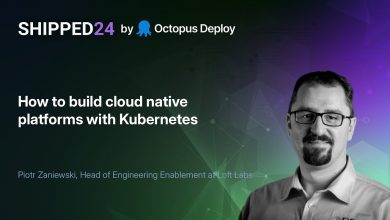AI-native: The Next Revolution After Cloud Native
The integration of AI into Cloud Native architectures, automated testing tools, and DevOps Flow best practices is transforming software development.
 The concept of “AI-native” represents a paradigm shift in software development, building on the foundations of Cloud Native architectures and poised to redefine how applications are designed, built, and operated.
The concept of “AI-native” represents a paradigm shift in software development, building on the foundations of Cloud Native architectures and poised to redefine how applications are designed, built, and operated.
Just as Cloud Native transformed software delivery by leveraging containers, microservices, and orchestration to achieve scalability and resilience, AI-native envisions a future where AI is deeply integrated into every layer of the development lifecycle, from ideation to production.
In the context of DevOps Flow, AI-native extends the principles of collaboration, automation, and continuous improvement by embedding AI-driven intelligence into workflows, tools, and platforms, fundamentally enhancing throughput—the rate at which valuable deliverables reach production.
Flow AI
The integration of AI into Cloud Native architectures, automated testing tools, and DevOps Flow best practices is transforming software development by enhancing efficiency, scalability, and decision-making across the Software Development Life Cycle (SDLC).
AI’s capabilities—such as machine learning (ML), predictive analytics, natural language processing (NLP), and generative AI—augment the technologies and processes central to DevOps Flow, enabling teams to address bottlenecks, optimize throughput (the rate at which valuable deliverables reach production), and align people, processes, and technology more effectively.
Impact of AI on Cloud Native Architecture
Cloud Native architectures, characterized by microservices, containers, orchestration (e.g., Kubernetes), Infrastructure as Code (IaC), and observability, provide the scalable, resilient foundation for DevOps Flow. AI significantly enhances these components:
- Intelligent Resource Management: AI-driven tools optimize resource allocation in Cloud Native environments. For example, ML models in Kubernetes (e.g., via tools like KubeFlow) predict workload demands and automatically scale containers, reducing costs and ensuring performance during peak loads. This aligns with DevOps Flow’s focus on eliminating waste (Lean principle) and scaling infrastructure to address bottlenecks, such as limited testing capacity.
- Enhanced Observability: AI-powered observability tools, like Dynatrace or Datadog with ML capabilities, analyze logs, metrics, and traces to detect anomalies, predict failures, and suggest root causes in real time. This reduces mean time to recovery (MTTR), a key throughput metric in DevOps Flow, by enabling proactive issue resolution in microservices-based systems.
- Automated Infrastructure Optimization: AI enhances IaC by analyzing infrastructure configurations (e.g., Terraform scripts) to recommend optimizations or detect misconfigurations. Tools like AWS SageMaker can predict infrastructure needs based on historical usage, ensuring environments are provisioned efficiently, which eliminates delays in testing or deployment setup identified in Value Stream Mapping (VSM).
- Security and DevSecOps: AI-driven security tools, such as Snyk or Palo Alto’s Prisma Cloud, use ML to identify vulnerabilities in container images or microservices codebases, integrating seamlessly with CI/CD pipelines. This strengthens DevOps Flow’s security practices, preventing security testing from becoming a bottleneck.
- Self-Healing Systems: AI enables self-healing in Cloud Native architectures by automating recovery from failures. For example, Kubernetes with AI-driven operators can restart failed pods or reroute traffic based on predictive models, minimizing downtime and supporting continuous delivery.
Impact on Flow Throughput
AI’s ability to optimize resources, enhance observability, and automate security and recovery directly addresses SDLC bottlenecks (e.g., slow environment provisioning or manual security checks) by ensuring Cloud Native systems scale dynamically and operate reliably, enabling faster and more frequent releases.
DevOps Flow, as a best practices program, integrates Agile, Lean, the Theory of Constraints, Value Stream Mapping (VSM), and Flow Metrics to streamline the SDLC and address bottlenecks, such as those from standalone testing departments. AI-native enhances DevOps Flow by embedding intelligence into its core pillars, revolutionizing how teams collaborate, optimize workflows, and leverage technology.



